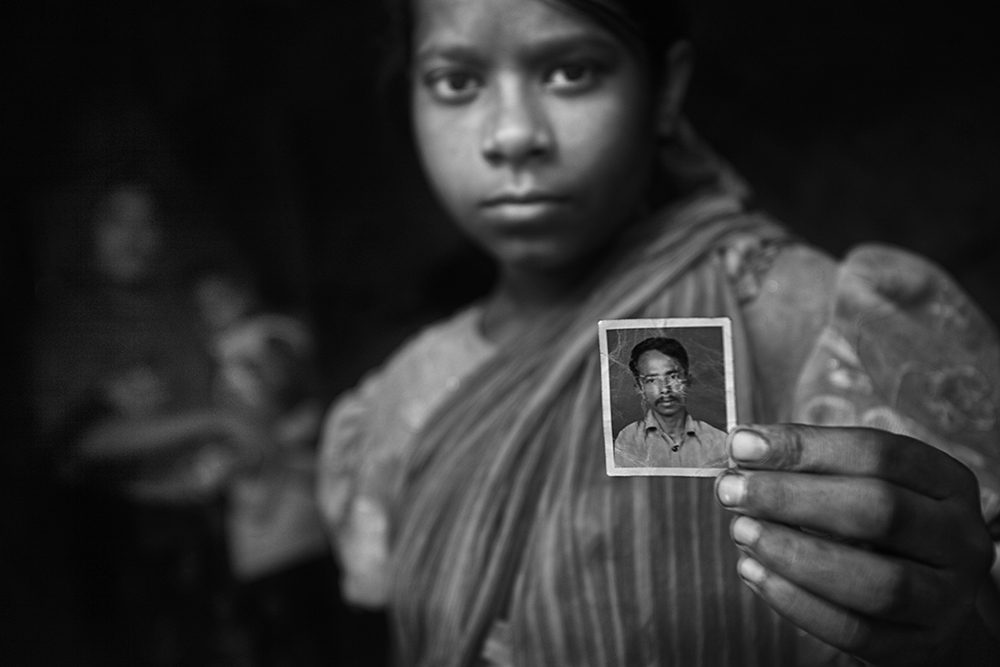blog
Book Review: 136 I am Rohingya by Saiful Huq Omi

For decades now, Bangladesh has been home to some 32,000 registered refugees living in camps, and an estimated 100,000 unregistered Rohingyas in makeshift sites. A further 200,000 to 300,000 Rohingya refugees live in irregular existence in different parts of Cox’s Bazar and adjacent districts.
“Myanmar recognises the members of 135 ethnic groups as its full citizens. The Rohingyas are not included. They are number 136,” one reads on the first few pages of this tome – hence the title 136 I am Rohingya.
Tomás Ojea Quintana, UN Special Rapporteur for the Situation of Human Rights in Myanmar (2008-2014), starts his foreword (dated 08.02.2017) by stating: “The Rohingya community is facing dramatic human rights abuses and a systematic attempt to deprive them of their identity. This is an undeniable truth and we are obliged to denounce it categorically.” I must admit I’m not sure whether to “denounce it categorically” is sufficient or should be regarded as the proper reaction to the crimes against humanity committed in Myanmar. Why does the international community not interfere?, I wonder.

Many unregistered Rohingya refugees in Bangladesh work as fishermen in Cox’s Bazar. They have revolutionized the fishing industry. Years ago, when the industry was dependenr solely on Bangladeshi fishermen, it was difficult to find people who were willing to go to sea year-round, due to the great risks involved. As the Rohingyas are desperate for work, they have little option but to go to sea during the off-season, when conditions are rough and dangerous. Consequently, fishing in the seas off Bangladesh now happens almost all year round.
Tomás Ojea Quintana describes this well-done tome as “an art and type of communication that is born from the artist’s sensitive, creative and professional eye, and penetrates in the deepest fibres of our humanity. It is time to end the focus on grammar and give way to the experience of photography. There, we will find ourselves confronted by the penetrating look of the Rohingyas, and from there we will be able to see ourselves.”
The reason why photographs are (often) more apt than words to help us understand the world is that photographs make us feel for they convey emotions. “Understanding is a feeling”, Robert Adams once penned. And, the photos in this work – all in black and white – are impressive. The Rohingyas are shown on sea and on land, posing for the camera and being caught unawares, playing games and building a temple, in the daytime and in the nighttime.

Rahima Khatun is a widow. When she came to Bradford in the UK, she and her daughter were both severly sick. They received medical treatment in Bradford and are now living healthy lives. If they had stayed in Bangladesh, they – like others – may have died for lack of treatment.
Photographer Saiful Huq Omi, born in 1980 in Bangladesh, founder of the photography school Counter Foto, is also a filmmaker, educator and activist. His first encounter with the Rohingya took place in 2008 in a refugee camp, he writes, but doesn’t mention where. “I was not prepared for what I saw and heard. My findings shocked me. The stories of persecution, rape, abduction, abuse, forced labour, displacement and killing were horrible. But perhaps no less horrible was how lonely the Rohingyas appeared to be. Other communities and nations who have faced similar deprivations and denials have had friends who stood with them. It felt however, that in the wide-open world of Allah, there were no true friends of the Rohingyas. Nobody cared … or at least, not enough.”

Anawar Katun (pseudonym) with a photograph of her stepfather, who tried to rape her on several occasions. On each occasion, Anwara’s mother saved her and eventually her stepfather killed her mother. A case has been filed against him for the murder of her mother but he has not yet been arrested.
He took photographs, spoke and gave lectures around the world in order to bring attention to their plight. He was like under a spell and felt he was becoming one of them. After ten years, he decided to go back home again but then “hell came to North Rakine State”. In August 2017, “the most extreme phase of the genocide had started.” And, Saiful Huq Omi did what he could. “My live video blogs on Facebook began to reach millions. I was photographing, shooting my film and deep down inside, I was screaming with anger.”

Needless to say, “stories of persecution, rape, abduction, abuse, forced labour, displacement and killing” are difficult if not impossible to visually document. The loneliness of the Rohingyas however can be photographed – and Saiful Huq Omi does that convincingly. What I also thought very well done were the informative captions (not all photos come with captions though) that can be found at the end of the book for they make once again clear how complex the stories behind photographs often are.

136 I am Rohingya
by Saiful Huq Omi
Schilt Publishing, Amsterdam 2018
www.schiltpublishing.com
Location: Online Type: Book Review, Documentary
Events by Location
Post Categories
Tags
- Abstract
- Alternative process
- Architecture
- Artist Talk
- artistic residency
- Biennial
- Black and White
- Book Fair
- Car culture
- Charity
- Childhood
- Children
- Cities
- Collaboration
- Community
- Cyanotype
- Documentary
- Environment
- Event
- Exhibition
- Faith
- Family
- Fashion
- Festival
- Film Review
- Food
- Friendship
- FStop20th
- Gender
- Gun Culture
- Habitat
- Hom
- home
- journal
- Landscapes
- Lecture
- Love
- Masculinity
- Mental Health
- Migration
- Museums
- Music
- Nature
- Night
- nuclear
- p
- photographic residency
- Photomontage
- Plants
- Podcast
- Portraits
- Prairies
- Religion
- River
- Still Life
- Street Photography
- Tourism
- UFO
- Water
- Zine

Leave a Reply